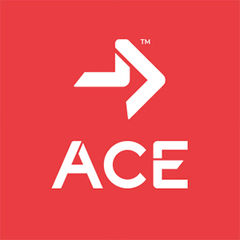There are several misconceptions about youth resistance training. For years it was believed that kids were too young for strength training because it would affect their musculoskeletal development, stunt their growth and cause serious injury. While this may be true for extreme heavy resistance training or long bouts of weight bearing labor on young kids, this is not the resistance training being practiced by coaches and teachers today.
With the appropriate resistance-training programs and qualified professionals giving instruction, resistance training can be highly beneficial for both sedentary and active kids. It can improve bone density and body composition and decrease insulin sensitivity, and avoid the development of osteoporosis, obesity and diabetes.
It is generally safe for kids that are ready for sports (typically around 7 or 8 years of age) to use some light free-weights, sport cords, medicine balls and body-weight exercises. There is no minimum age required, but kids should be mature enough to follow instructions and understand the benefits of what they are doing.
Most resistance-training programs include multijoint movements that work several muscle groups at the same time. In this way, not only is strength required, but kids also become more coordinated and use greater core stability during these exercises.
Here are some key things to remember when getting kids started in a resistance-training program:
1. Be sure they have good instruction and are being supervised by a professional.
2. Ensure the environment is safe and nonhazardous.
3. Focus on proper technique.
4. Perform one to three sets of 15 repetitions
5. Train two to three times per week on nonconsecutive days.
6. Perform exercises for the upper and lower body and midsection for a balanced program.
7. Include exercises that require balance and coordination.
8. Vary what exercises you use and in what order to diversify the program.
Here is a fun and interactive strength-training routine that kids can do at home or with friends at the park. It requires no equipment—just body weight. There are two different resistance-training workouts, Program A and B. Alternate between these two programs on nonconsecutive days for two to three days per week.
Program A:

*Swimmers: Lie on your stomach and lift your arms and legs off the floor as high as possible. Pretend to swim by moving your arms and legs up and down without letting them rest on the floor.
Program B:

*Inchworms: Start on your feet and bend down to bring your hands to the floor. Walk out into a push-up position. Hold the push-up position for three seconds; walk the hands back toward the feet and all the way up to standing. Repeat this same move again.
*Single-leg Hops: Stand on your left leg and begin to hop on your left foot repeatedly without touching the other foot to the floor. Switch legs after time is up.
*Side Plank: Start in a forearm plank position and lift the left arm up to the sky as the left side of the body rotates toward the ceiling. Hold and repeat on the right side after time is up.
*Heel Walks: From a standing position, pull your toes up as far off the ground as possible, leaving just your heels touching the ground. Begin to walk in a line or circles while keeping just your heels on the ground and toes up high off the ground.
*Crab Walks: Crab position is the opposite of being on the hands and knees—the front side of your body faces up are facing up toward the sky, while your hands are under your shoulders and your feet are under your knees bent at 90 degrees. Lift your hips off the floor and even with your knees and shoulders. Crab walk by alternating the left foot off the floor and then the right foot.
*Bicycle Crunches: Lie on your back with your shoulder blades off the floor and your knees at 90 degrees. Cycle your legs as if you were riding a bike and try to keep the shoulder blades off the floor and the low back pressed firmly into the floor.




 by
by 


